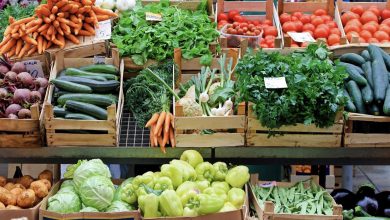Crop Rotation Strategies for Improved Soil Fertility in Zimbabwe: Sustaining Harvests, Sustaining Lives

In the heart of rural Zimbabwe, where farming is more than a livelihood—it’s a way of life—generations of smallholder farmers are embracing crop rotation strategies for improved soil fertility in Zimbabwe. These methods, rooted in ancient wisdom and backed by modern science, are transforming depleted lands into thriving, nutrient-rich soils. As families depend on seasonal harvests for survival, sustainable agricultural practices are becoming the cornerstone of food security, especially in the face of climate change.
Sustainable Farming Practices to Improve Soil Health in Zimbabwean Communities
Across provinces like Mashonaland, Manicaland and Matabeleland, farmers are witnessing firsthand the benefits of rotating crops. By alternating maize with legumes such as groundnuts or cowpeas, soil fertility improves naturally. Legumes fix nitrogen in the soil, reducing the need for chemical fertilisers, which are often unaffordable for rural families. Moreover, rotating crops breaks pest and disease cycles, reducing the reliance on pesticides and improving plant resilience. These sustainable farming practices are building resilience among communities while enriching Zimbabwean soils.
One farmer in Gokwe, Mrs. Muchaneta Sibanda, reflects on how changing her planting cycle turned her fortunes around. “Before, I planted maize every season and watched yields drop. But when I introduced groundnuts and sunflowers in between, the soil revived. My harvest doubled within two years,” she shared. Stories like hers echo throughout the countryside, proving that crop rotation strategies for improved soil fertility in Zimbabwe are more than theory—they are a lived success.
Diversifying Crops and Rotations for Soil Fertility Enhancement
Agricultural researchers at the University of Zimbabwe and institutions like CIMMYT recommend crop diversification as part of an integrated approach. Adding small grains like sorghum and millet to the rotation improves both soil structure and water retention. This is particularly critical in drought-prone areas, where moisture preservation can make the difference between harvest and hunger. Diversifying rotations also spreads economic risk; if one crop fails, another may still yield returns, thus strengthening food security.
These strategies do not just help soil recovery—they build independence. With fewer inputs needed, farmers can reallocate resources to storage, transport, or irrigation systems. The shift from monoculture to mixed cropping means more balanced nutrition at the household level too. Rotating maize with beans or groundnuts, for instance, ensures access to protein, especially in areas where meat is scarce.
Regenerative Agriculture Techniques Revive the Land
The principles of regenerative agriculture in Zimbabwe align seamlessly with traditional knowledge. Older generations remember rotating crops before the commercialisation of agriculture introduced mono-cropping as the norm. Reintroducing crop rotation has not only restored land productivity but also cultural pride. Implementing crop rotation strategies for improved soil fertility in Zimbabwe can reduce soil degradation significantly. It will lead to sustainable farming and rural development.
Initiatives supported by organisations like Welthungerhilfe and Practical Action are empowering communities through training and access to local seed varieties. These seeds are often better adapted to Zimbabwe’s diverse agroecological zones. By training farmers on effective rotation sequences and providing access to organic composting methods, these projects ensure long-term soil fertility enhancement without burdening farmers financially.
Building a Legacy through Climate-Resilient Farming Systems
At its core, adopting crop rotation strategies for improved soil fertility in Zimbabwe is about securing a future for the next generation. With the country’s economy still heavily dependent on agriculture, maintaining productive soils is an investment in national stability. Moreover, these strategies are low-cost, environmentally friendly, and scalable, making them suitable for both communal lands and commercial farms.
Climate-smart farming systems are no longer optional—they are essential. By weaving together traditional knowledge, scientific research, and community cooperation, Zimbabwean farmers are rewriting the narrative of rural decline. Instead, they are building a legacy of innovation, sustainability, and resilience.
The story of soil is the story of survival, and through crop rotation, Zimbabwe is nurturing both its land and its people.





